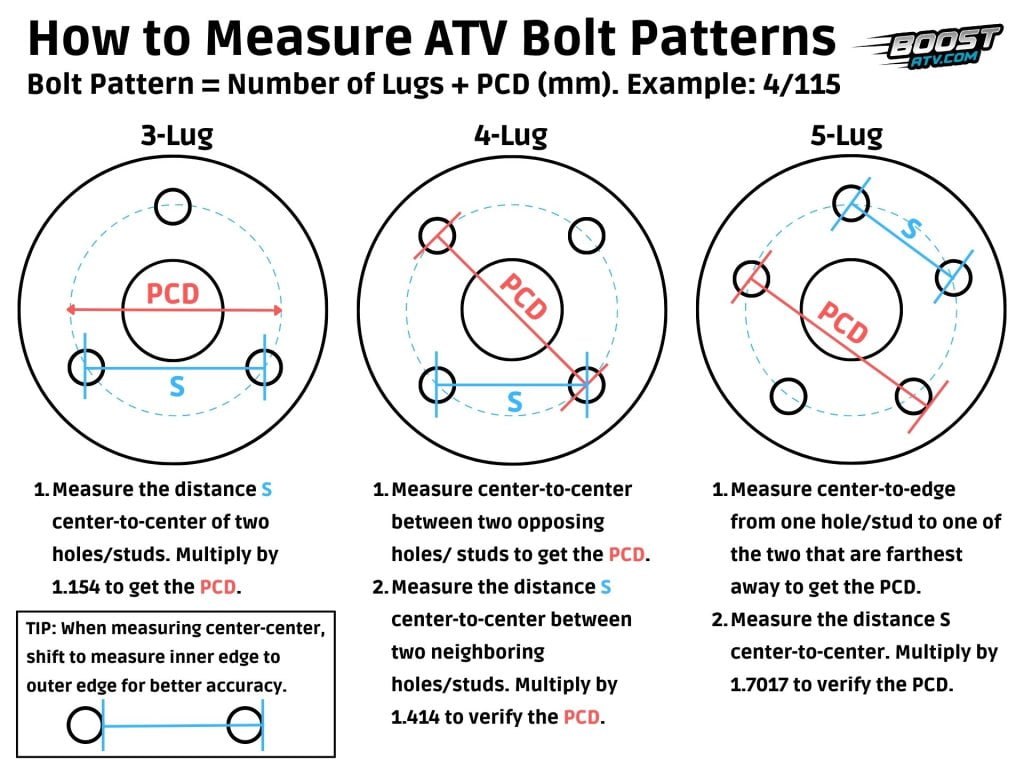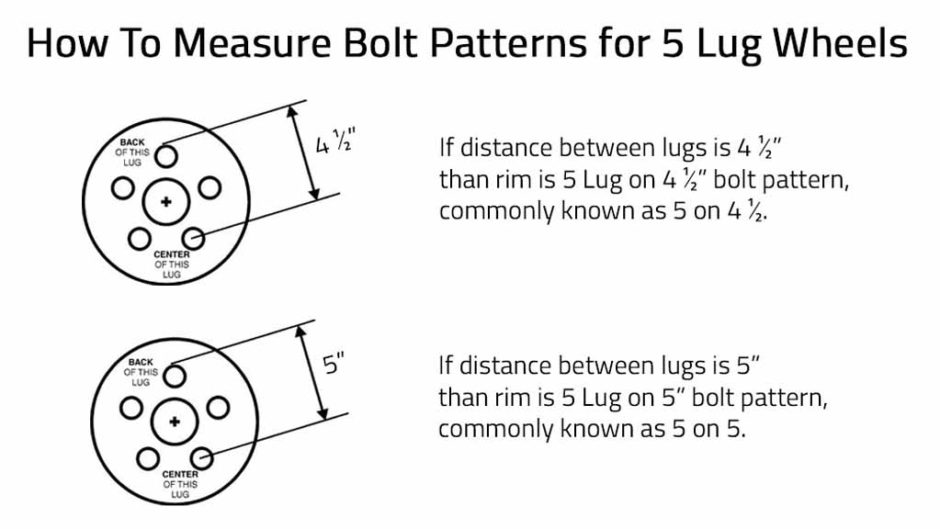Decoding Your Wheels: A Guide to Measuring Tire Lug Patterns
Ever found yourself staring at a flat tire, wondering if that spare in your trunk will actually fit? Or maybe you're dreaming of upgrading your car's look with some snazzy new rims? In both scenarios, understanding your tire lug pattern is key. It's a fundamental piece of information that often goes unnoticed until it's absolutely needed. This seemingly small detail plays a big role in ensuring your wheels are properly and safely attached to your vehicle.
Determining your vehicle's lug pattern – sometimes called a bolt pattern – isn't as daunting as it might sound. It involves identifying the number of lug nuts or bolts and measuring the distance between them. Knowing this pattern is crucial for replacing wheels or tires, as an incorrect fit can lead to serious safety hazards. Imagine a wheel coming loose while driving! This guide will walk you through the process, empowering you with the knowledge to confidently navigate the world of wheels and tires.
The history of the lug pattern is intertwined with the evolution of the automobile itself. As cars developed, so did the methods for attaching wheels. Early designs were often simplistic, but as vehicles became faster and heavier, the need for more secure and standardized wheel attachments grew. The modern lug pattern emerged as a solution, offering a reliable and consistent way to secure wheels to the vehicle's hub. Its importance cannot be overstated, as it's a fundamental component of vehicle safety and performance.
One of the main issues surrounding tire lug patterns is the potential for confusion and misidentification. With a variety of patterns in existence, it's easy to make a mistake if you're not careful. Using the wrong lug pattern can lead to improper wheel fitment, causing vibration, damage to the vehicle, and potentially dangerous driving conditions. Understanding how to accurately determine your vehicle's bolt pattern is essential for avoiding these risks.
The lug pattern is defined by two numbers: the number of lugs and the diameter of the circle formed by the center of the lug holes. For example, a common pattern is 5x114.3. This indicates five lug holes and a diameter of 114.3 millimeters. Sometimes, especially with older vehicles, you might encounter fractional measurements like 5x4.5, indicating a diameter of 4.5 inches. It's essential to use the correct unit of measurement when identifying your pattern.
One benefit of knowing your lug pattern is the ability to choose the right replacement wheels. You can confidently shop for new rims, knowing they will fit correctly. Another advantage is being prepared for roadside emergencies. If you have a flat tire, you can ensure your spare tire is compatible. Lastly, understanding the lug nut pattern empowers you to make informed decisions about your vehicle's maintenance and safety.
To measure a 5-lug pattern, measure from the center of one lug hole to the center of the lug hole two spots away. For a 6-lug pattern, measure from the center of one lug hole directly across to the center of the opposite lug hole. For a 4-lug pattern, measure from the center of one lug hole to the center of the opposite lug hole. Always double-check your measurements and consult your vehicle's owner’s manual for confirmation.
Always ensure your wheels are compatible with your car's lug pattern. Consult your vehicle’s owner’s manual or a trusted mechanic if you’re unsure. Use a calibrated measuring tool for accuracy. Double-check your measurements to avoid errors. Be mindful of metric versus imperial units.
Advantages and Disadvantages of Measuring Your Own Lug Pattern
| Advantages | Disadvantages |
|---|---|
| Saves time and money potentially. | Potential for inaccurate measurement. |
| Empowering knowledge about your vehicle. | Can be confusing for complex patterns. |
Frequently Asked Questions:
1. What is a lug pattern? - The arrangement of lug holes on a wheel hub.
2. Why is it important? - Ensures proper wheel fitment and safety.
3. How do I measure it? - See the guide above.
4. What if my spare tire has a different pattern? - It may not fit safely.
5. Can I change my car’s lug pattern? - Generally not recommended and is complex.
6. Where can I find my car’s lug pattern information? - Owner’s manual, online resources, or a tire shop.
7. What tools do I need? - A ruler or caliper.
8. What if I get it wrong? - Improper fitment can be dangerous; consult a professional.
Tips: Use a reliable measuring tool. Clean the wheel hub for accurate measurements. Consult your vehicle’s manual. Double-check your work.
In conclusion, knowing how to identify your car’s lug pattern is an essential piece of car ownership. It empowers you to make informed decisions about wheel replacements, ensures your safety on the road, and can even save you from frustrating roadside emergencies. While the process might seem technical at first glance, with a little guidance and practice, it becomes a manageable task. By understanding the basics of lug patterns, their importance, and the methods for accurate measurement, you are taking a proactive step towards responsible vehicle maintenance and ensuring a safe and enjoyable driving experience. Don't let this seemingly small detail become a major headache down the road. Take the time to familiarize yourself with your car’s lug pattern – your wheels will thank you for it.
Unlocking the world of bilingual learning a guide to finding donde ver dora la exploradora gratis
Unlock your athletic potential a deep dive into d2 schools for track and field
Elevate your drive exploring the rav4 leather interior















